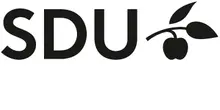Economics Terms A-Z
Hyperinflation
Read a summary or generate practice questions using the INOMICS AI tool
Hyperinflation describes very high and rapidly accelerating inflation. Following a widely accepted definition developed by American economics professor Philip Cagan in 1956, hyperinflation begins when monthly inflation rises by more than 50 percent.
What does this imply? Imagine the cost of your average weekly grocery list increasing from €100 to €150 within a month, and €225 in the next month. In extreme periods of hyperinflation, prices rise exponentially, sometimes doubling within a week or even a day.
What causes hyperinflation?
Almost all hyperinflations occurred in times of war, conflict, or severe economic turmoil, in conjunction with government budget deficits being financed by currency creation. In those instances, the need for continued government spending is large, but there is a situation of declining real tax revenue. Being unwilling or often unable to increase borrowing, governments started printing money to cover expenses.
When the money supply expands while output remains constant, there is more money available in the economy to spend on the same number of goods. As expected from the quantity theory of money, this causes the value of money to fall and prices to increase. In addition, the velocity of money increases as people prefer to spend their money immediately rather than hold on to depreciating cash.
As prices rise exponentially, things become more expensive, including for the government. If in such a situation the government continues printing even more money instead of tightening monetary policy, inflation will continue to rise, creating a snowball effect.
As wages fail to keep up with this surge in prices, and cash or savings deposited in banks decrease in real value, consumers’ purchasing power falls rapidly. In response, people start hoarding essential goods in anticipation of further price increases, thereby causing supply shortages and further spiraling price increases that can get out of control.
How to address hyperinflation?
Expectations play a major role in perpetuating price spurts during bouts of hyperinflation. To end this spiral of exponentially increasing prices, it is necessary to break the public’s expectation that price increases will continue and restore confidence in the country’s currency and economy.
This requires a tightening of monetary policy and a credible commitment by the government to reverse the factors that caused rapid inflation and currency devaluation in the first place. Measures that have been successful in the past include the institution of an independent central bank, fundamental fiscal policy regime changes, and the establishment of a credible exchange rate stabilization mechanism.
A common accompanying measure is currency redenomination. This is the process of changing the nominal value of banknotes and coins in circulation, often simply by reducing digits (eliminating extra zeroes). This may go in line with a change in the currency name. While the process is mainly symbolic and does not affect the currency’s real value, it can have a psychological impact on the population, if citizens trust that the new currency will be more stable in value and will not be overprinted.
Another option is currency substitution. In this case, the country officially abandons the local currency in favor of the exclusive use of another country’s currency, usually the US dollar. This practice is known as full dollarization. It often follows processes of partial dollarization, where citizens themselves start substituting domestic currency with foreign currency to make transactions and allocate savings.
Good to know
While hyperinflations are rare, they have occurred in more than a few countries throughout history – including Germany (1920s), Greece (1944), China (1948-49), Hungary (1945-1946), Argentina (1989-1990), Yugoslavia (1994), Zimbabwe (2000s), and Venezuela (2016-2021), for example. Below we provide two historic and two recent examples.
Two historic examples of hyperinflation
Germany 1920s
Germany saw a period of hyperinflation during the Weimar Republic, between 1921 and 1923, which was closely linked to the consequences of World War I.
Unlike France, which implemented its first income tax to cover war expenses, Germany decided to fund the war entirely by borrowing. The government believed that it would be able to pay off the debt by winning the war and imposing war reparations. This strategy failed as Germany lost the war, which left the new Weimar Republic with massive war debts that it could not afford. The debt problem was exacerbated by the Republic printing money without any economic resources to back it, as the country had suspended the gold standard (the convertibility of its currency to gold).
Hyperinflation began from January 1920, when the monthly inflation rate hit 57 percent. By 1923, it had reached a level where prices were doubling every two days. In November 1923, the monthly inflation rate stood at about 29,500 percent.
The Reichsbank responded by introducing a new currency: 1 trillion old Marks were exchanged for 1 Rentenmark, such that 4.2 Rentenmarks were worth 1 US dollar, exactly the same rate the Mark had in 1914.
Hungary 1945-1946
Between 1945 and 1946, Hungary experienced the worst episode of hyperinflation ever recorded, which had its origins in the consequences of World War II.
In 1944 the country became a battleground between Russia and Germany, which destroyed or damaged most of the country’s industrial capacity. Due to the substantive fall in production capacity, prices started to rise. With no tax base to rely upon, the Hungarian government decided to stimulate the economy by printing money and injecting it into the economy through various channels, including low interest rate loans.
At its peak, the monthly inflation rate increased from 28 million percent in June 1946 to an unthinkable 12,952 trillion percent in July 1946. At this point, the daily inflation rate exceeded 200%, with prices doubling every 15 hours, making normal economic calculations impossible and transactions using money extremely difficult to execute.
Despite its severity, the reforms of August 1946 were successful. The reform package included a range of stabilization measures. Specifically, a new currency was introduced, an article guaranteeing independence of the central bank was reestablished, reserve requirements for commercial banks were imposed, the tax system was reformed, and public sector employment was reduced.
Two recent examples of hyperinflation
Zimbabwe 2000s
Zimbabwe suffered an economic crisis in the early 2000s. The economy entered into decline in 1999. Agricultural production had been falling due to droughts and processes of land reform, accompanied by rising government debt and withdrawals of development aid over land seizures. In the face of shrinking revenues and rising debt obligations, the government responded by printing more money.
Inflation started to surge in 2001 in response to serious food shortages. After the first peak in 2003, the government managed to keep inflation in check during 2004 and 2005, following a reduction in money supply. However, rates started to escalate in 2006. In 2008, Zimbabwe’s annual inflation rate exceeded 231 million percent. At its highest point, prices doubled every few days. The Economic Times newspaper noted on June 13, 2008, that “a loaf of bread now costs what 12 new cars did a decade ago,” and “a small pack of locally produced coffee beans costs just short of 1 billion Zimbabwe dollars. A decade ago, that sum would have bought 60 new cars.”
To slow inflation, the government enforced price controls between 2007 and 2008. Producers were obliged, sometimes under police force, to sell their goods and services at government-mandated prices. Given that producers were incurring losses at the established sales prices, this resulted in significant output cuts and shortages in supply – with many goods being unavailable in stores, while being traded at much higher prices on the black market. Groceries and food items were sometimes accepted as barter for rent, and some commodities, such as gasoline, were exclusively traded in US dollars or South African rand. The period of hyperinflation ended in 2009, when Zimbabwe abandoned its currency and adopted the US dollar, opting for full dollarization.
Venezuela 2016-2021
Venezuela recently came out of a four-year cycle of hyperinflation. By 2014, Venezuela’s economy and public budget had become increasingly dependent on oil exports, accounting for 90 percent of the country’s total export earnings. When the global oil price dropped, foreign demand for the Venezuelan bolívar fell, reducing the currency’s value and driving up the cost of imported goods.
In face of shrinking government revenues, the government responded by printing more money. The situation worsened as the oil price continued to fall, and other factors reduced Venezuela’s oil output.
Venezuela first declared a state of emergency in 2016, when the annual inflation rate hit the 800 percent mark. During 2017 the inflation rate remained in a similar range, but then inflation spiraled out of control in 2018, reaching 130,000 percent.
Seeing their currency’s value plummet, Venezuelans started to convert their savings into US dollars, which further lowered the value of the bolívar. In the face of exchange controls, which had been in place since 2002 to avoid declines in the official value of the bolívar against the US dollar, the black market price for US dollars went up.
In 2019, the government relaxed economic controls, and started to reduce government spending. As a result, the annual inflation rate declined to about 9,500 percent in 2019, 3,000 percent in 2020, and just below 700 percent in 2021. In January 2022, monthly inflation had been below 50 percent for 12 months, which officially ended the state of hyperinflation. Nonetheless, Venezuela still displays one of the highest inflation rates worldwide. While the bolívar is still the official currency, the US dollar is used in more than 60 percent of all transactions.
-
- Conferenza
- Posted 1 week ago
EcoMod2026 International Conference on Economic Modeling and Data Science
Between 8 Jul and 10 Jul in Esch-sur-Alzette, Lussemburgo
-
- Postdoc Job
- Posted 1 week ago
Postdoctoral Researcher in Financial Economics (f/m/x, 100%)
At Halle Institute for Economic Research (IWH) - Member of the Leibniz Association in Halle (Saale), Germania
-
- Conferenza
- Posted 1 week ago
Nordic Econometric Meeting 2026
Between 1 Jun and 3 Jun in Helsinki, Finlandia














